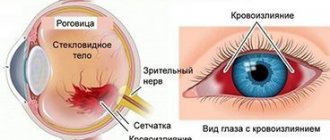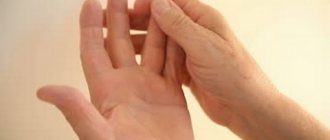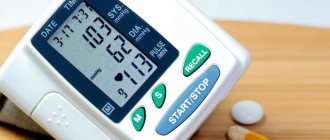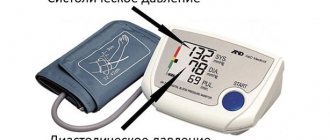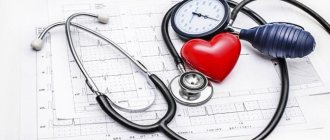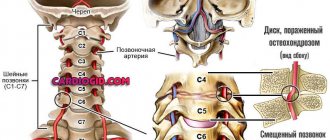A cramp is a sudden, involuntary, often painful contraction of a muscle. This happens to everyone from time to time: at night during sleep, during physical activity, and sometimes at rest. Spasm can occur in any part of the body - in the limbs, in the side, in the buttock, in the abdomen.
Often people have no idea why their muscles cramp. However, it is very important to find out the reasons for this, because a seizure can be both a physiological norm and a symptom of a serious disease. Let's look at this in detail.
Why do muscles cramp?
The reasons can be divided into two groups. The first includes those that do not have any underlying diseases. So, if the calf or gluteal muscles cramp in a dream, there is no physiological pathology in this. The seizure in this case is a parasomnia, that is, a phenomenon associated with sleep. Spasms that occur during increased physical activity also do not indicate an abnormality.
In other cases, such discomfort may be caused by:
- neurological disorders;
- compaction of muscle fibers against the background of physical inactivity;
- metabolic disorders;
- micronutrient deficiency;
- dehydration;
- poisoning (including cramps from a hangover).
There is also a disease called hypoparathyroidism. It is characterized by a convulsive syndrome that immediately affects muscle groups. This condition is caused by hypofunction of the parathyroid glands.
Epileptic seizure
A seizure in epilepsy, or, as it is also called, status epilepticus, is perhaps the most striking example of what the average person imagines when they mention seizures.
The man suddenly pushes, his body contracts chaotically, incoherent wheezing is heard, foam comes out of the mouth. The picture is terrible, and the situation requires quick medical intervention. Surprisingly, just one intravenous injection quickly brings a person back to life.
What to do? The main task of a witness of status epilepticus is to ensure the safety of the unfortunate person so that he does not accidentally injure himself on surrounding objects. If possible, it is recommended to lay him on a soft surface and turn his head to the side so that vomit and foam do not enter the respiratory tract. Call an ambulance as quickly as possible.
If an attack occurs for the first time, it is very important to undergo a full examination as soon as possible. This may be the onset of one of the neurological diseases or a brain tumor.
ONLINE REGISTRATION at the DIANA clinic
You can make an appointment by calling the toll-free phone number 8-800-707-15-60 or filling out the contact form. In this case, we will contact you ourselves.
Types of seizures
If involuntary contraction of muscle fibers is caused by overexcitation of the cortical part of the brain, such convulsions are classified as epileptic. Non-epileptic ones are provoked by diseases of the central nervous system, imbalance of nutrients, and unfavorable external conditions.
Also, involuntary muscle contractions can be classified according to their nature:
- tonic – long-term, turning into a state of tension;
- myoclonic – short;
- clonic - jerky, cyclically repeating and alternating with relaxation.
Based on localization, these phenomena are divided into generalized and local. The former cover a significant part of the body (arms, legs, face, neck, side, torso, and sometimes extend to the respiratory tract). The latter occur in separate areas (for example, only in the back or only in the buttock).
Magnesium and potassium
Cramps that periodically appear in the feet, legs, and fingers can occur in people who consider themselves to be completely healthy. Treatment of this unpleasant and painful sensation must begin with a review of the lifestyle and nutritional composition.
It is necessary to understand whether there is enough magnesium and potassium in the diet, the lack of which can not only lead to seizures, but also make them permanent. It is these microelements that regulate the functioning of muscle fibers. Hypomagnesemia causes cramps in the legs, arms, back, neck, and tingling of the fingertips. Treatment with drugs for seizures can relieve pain.
Causes of seizures in different parts of the body
Muscle spasm in a specific area of the body is caused by specific factors. Most often it occurs in the legs. The culprits may be overexertion (including due to intense training), varicose veins and hypothermia.
It can cramp not only the calf muscle, but also the femoral and even gluteal muscles. Sometimes the unpleasant sensation will spread throughout the entire leg.
Abdominal cramps are also common because most abdominal organs are composed of highly contractile smooth muscle cells. Most often, the organs of the digestive system spasm. This is how the well-known abdominal pain occurs. In women, contractions of the uterus (during menstruation, pregnancy or gynecological diseases) cannot be ruled out.
Muscle spasms in the back indicate diseases of the musculoskeletal system. This could be osteochondrosis, intervertebral hernia, degenerative changes in the spine.
Forms of the disease
Chest neuralgia can be primary (an independent pathology) and secondary (a symptom of another disease). There are also radicular and reflex forms of the disease. In the first case, symptoms of intercostal neuralgia on the left and right arise due to irritation of the spinal roots. The second type of pathology occurs due to a negative effect on peripheral receptors.
In addition, clinicians distinguish the following types of thoracic neuralgia:
- musculoskeletal;
- vertebrogenic;
- spicy;
- chronic;
- right-sided;
- left-handed;
- psychogenic;
- during pregnancy.
Intercostal neuralgia of a certain type has its own characteristic symptoms and treatment features.
Who usually experiences muscle cramps?
This trouble is familiar to everyone: men and women, children and the elderly, athletes and office workers. Only some people get to know her for natural reasons and rarely encounter her, while for others she becomes a frequent companion.
The risk group includes:
- children under 3 years of age who have experienced a rise in temperature above 38 degrees;
- elderly people suffering from vascular diseases and muscle atrophy;
- men engaged in heavy physical labor;
- athletes (football players, swimmers, runners);
- people who abuse alcohol and often experience hangovers;
Predisposes to muscle spasms and pregnancy. In mild cases, they are caused by a lack of vitamins due to changes in the body; in severe cases, they are caused by eclampsia.
Causes of intercostal neuralgia and risk factors
Intercostal neuralgia can develop for a variety of reasons. Among them are:
- injuries to the thoracic nerves, chest and spine;
- surgical interventions, long-term immobilization of a person in a certain position;
- poisoning with chemicals, prolonged use of medications;
- congenital developmental anomalies, hereditary diseases;
- infectious processes (shingles, tuberculosis, brucellosis and others);
- some neurological diseases, such as radiculitis and multiple sclerosis;
- diseases of the spine (osteochondrosis, deforming spondylosis, herniated intervertebral discs);
- compression of nerve branches in the bone-connective sheaths, for example, in the presence of scar changes, benign or malignant neoplasms;
- immunodeficiency (HIV infection, cancer, etc.);
- allergic reactions;
- diabetes;
- various metabolic disorders in nervous tissue and its hypoxia;
- lack of B vitamins in the body;
- alcohol abuse;
- osteoporosis;
- pathology of nearby anatomical structures (aorta, lungs, pleura);
- various systemic diseases (atherosclerosis, rheumatism, anemia, thyrotoxicosis, etc.).
More often, chest neuralgia appears due to several causes. Therefore, it is typical for older patients with vascular, degenerative and metabolic disorders. Sometimes symptoms of neuralgia appear after excessive physical activity, sudden movements or prolonged stay in one position. They can also occur after hypothermia or severe stress.
More often, intercostal neuralgia is observed on the left or right; less often, there is a bilateral lesion. In most cases, the pathogenesis is based on muscle spasm, leading to compression of nerve fibers. Pain occurs in response to nerve damage.
In children, signs of intercostal neuralgia are rare. When they appear, parents should definitely show the child to the doctor, as this may be a signal of the presence of a serious pathology. The doctor will determine the possible causes and explain how to cure intercostal neuralgia in this case.
Why do muscles cramp in pregnant women?
Carrying a child leads to significant changes in the body. In particular, metabolism is rebuilt. As a result, many expectant mothers are faced with magnesium deficiency, which is why cramps appear.
Pregnant women's legs are subject to greater stress due to weight gain. Hence the involuntary muscle contractions that occur in the evenings and at night. They can also be triggered by varicose veins, which often accompany hormonal changes.
Pregnant women often complain about back pain. The lumbar spine is under constant tension, forced to bend under the pressure of the uterus, so such sensations are normal. Therefore, expectant mothers are recommended to lie on their side to relieve the load on the spine.
Magvit is an excellent cure for seizures
One of the most affordable, safe and effective medicines for treating seizures is the drug “Magvit” , produced by the Belarusian pharmaceutical company “Minskintercaps”.
This is the first drug completely developed by domestic pharmacists and has a beneficial effect in the treatment of seizures.
“Magvit” successfully fights both primary and secondary magnesium deficiency, and the pyridoxine (vitamin B6) included in the drug improves the absorption of magnesium into the blood and its absorption at the cellular level.
The combined use of vitamin and magnesium citrate components of the drug is justified by the following clinically proven data:
- magnesium and B6 enhance and complement the pharmacological effects; — the vitamin helps reduce the amount of magnesium excreted from the body and increases its content in red blood cells; - absorption and assimilation of magnesium improves; - Pridoxine, under the influence of magnesium in the human liver, transforms into the active metabolite pyridoxal-5-phosphate.
Diagnostic methods
If the muscles cramp regularly and the person experiences severe pain, it is necessary to consult a doctor. You should also be concerned if this symptom does not have a clear cause (it is not associated with training or staying in an uncomfortable position for a long time).
A common reason why people put off seeing a doctor is not knowing who can help with the problem. It’s better to start with a therapist, and he will give you a referral to a specialist:
- neurologist;
- gastroenterologist;
- phlebologist;
- gynecologist;
- endocrinologist.
After the initial examination, collecting complaints and receiving test results, the doctor will tell you what additional diagnostic methods will be needed. If your stomach cramps, you will be referred for an ultrasound, your back for an X-ray, your neck or calf muscles for a Doppler ultrasound of the blood vessels.
Is osteopathy effective for intercostal neuralgia?
The causes of neuralgia in the rib area can be different. However, in many cases, a pinched nerve is caused by the consequences of various injuries a person has received in the past. The capabilities of fine diagnostics using hands make it possible to identify and eliminate these disorders, which leads to the elimination of compression of the nerve and the restoration of its normal blood supply. As a result, inflammation and its integral companion – pain – go away. Osteopathy shows high effectiveness in the treatment of both unilateral and bilateral intercostal neuralgia.
What treatment is possible
If diseases of the internal organs are identified that cause muscle cramps, then treatment of the underlying disease will eliminate the accompanying symptoms. Depending on the location, this may include medication, massage, or physical therapy.
Uncontrolled use of anticonvulsants is unacceptable. They are prescribed to patients with epilepsy. If a person sometimes experiences cramps in the gluteal muscle or neck, you should not abuse such medications.
First aid also depends on the location of the spasm. If it occurs in the leg (from the buttock to the foot), you need to rub the muscles, restore blood circulation in them, and warm them up. The back should be kept at rest. But with a belly it’s better not to take risks and call a doctor right away, especially for women who know about their pregnancy.
Possible complications and consequences
Any neuralgia, in particular intercostal neuralgia, that does not respond to treatment, may be a sign of a serious illness. Most of the complications that arise with thoracalgia are precisely a manifestation of the underlying pathology, which worsens against the background of constant pain.
Chest neuralgia itself, with a long-term severe course, can provoke the development of a hypertensive crisis or an attack of angina (less often, myocardial infarction). Severe, constant pain affects a person’s physical and mental state in different ways. Often severe symptoms of intercostal neuralgia on the left or right significantly complicate the patient’s life. He sleeps poorly, is nervous, cannot move normally and do his usual work.
Pain in the intercostal spaces does not allow the patient to perform full breathing movements, which leads to a decrease in oxygen supply to the body and the development of hypoxia. Sometimes neuralgia is accompanied by such debilitating pain that it contributes to emotional exhaustion, and this is a serious complication, since this condition causes depression.
What to do if a muscle is severely cramped
It is not always possible to easily endure such an attack by limiting yourself to rubbing the affected area. The pain can be unbearable. It can be removed with a sharp impulse.
For cramps due to a hangover, the patient should be placed in a horizontal position and the legs should be raised to reduce blood flow to the extremities. At the same time, it is important to make sure that we are not talking about an epileptic attack (they are not uncommon in alcohol intoxication).
In older people, involuntary muscle contractions are often a warning sign of stroke. Convulsions may give way to paralysis. Timely treatment is important here, so it is better to call an ambulance immediately.
Neuralgia during pregnancy
If intercostal neuralgia appears in a pregnant woman, how to diagnose it and how to treat it is decided by a neurologist together with a gynecologist. Therapy is selected taking into account possible negative effects on the fetus. Self-medication in this situation is considered unacceptable, as this can have a negative impact on the health of the expectant mother and child.
To prevent chest neuralgia from appearing during pregnancy, it is advisable to follow preventive measures. If a woman has previously had attacks of thoracalgia, then at the stage of preconception preparation she should visit a neurologist and osteopath. The doctor will conduct a diagnosis, and then the neurologist will give a number of recommendations on how to treat intercostal neuralgia. An osteopath will identify possible causes of neuralgia and conduct a treatment session aimed at eliminating them.
Prevention
The best prevention of involuntary muscle contractions is moderate physical activity. Regular exercise helps keep your muscles under control. The tissues will not suffer from physical inactivity or sudden overload. This is equally beneficial for both men and women at any age.
A set of exercises to prevent cramps always includes stretching. It is useful to do it before bed so that unpleasant symptoms do not occur at rest.
Since muscles often cramp due to hypovitaminosis and lack of microelements, it is important to eat a balanced diet. If you cannot get them in sufficient quantities from food, you should additionally take vitamins B and E, as well as magnesium, calcium and potassium supplements. It is also important to drink enough fluids, because similar discomfort occurs due to dehydration.
Advantages of Minskintercaps drugs
The company has earned well-deserved fame thanks to the production of inexpensive, high-quality medicines. All drugs comply with the requirements of the GMP standard, and their quality and composition are tested in a chemical and biological laboratory accredited in accordance with the requirements of STB ISO/IEC 17025.
The drugs are created from raw materials supplied by the world's leading companies; production is controlled by Pharmacovigilance and meets the requirements set by the European Parliament.
13 Feb 2018
Previous News Feed Next
I want to get rid of these symptoms as quickly as possible. As a rule, muscle pain appears as a result of physical activity. But is this always the case? When is pain just a harmless physiological phenomenon, and when is it a sign of illness?
Muscle spasms
Muscle spasms are the most common cause of muscle pain. Muscle spasms can develop for various reasons. It develops acutely or over a long period of time with chronic overexertion. In this case, the pain can be dull, aching or, on the contrary, stabbing. It can last a few seconds or be protracted.
The most common reasons that lead to persistent muscle spasms:
- Prolonged muscle strain due to an uncomfortable position in which a person works. This is precisely the nature of back and neck pain among many office workers, leg pain among teachers and salespeople, hairdressers, and surgeons.
- Injuries as a response when muscles are forced to overstrain.
- Incorrect posture - as a result of this, certain muscle groups are constantly under heavy load and they are overstrained.
- Carrying a bag on one shoulder, and other asymmetrical physical activity.
- Hypothermia (fans, air conditioners and other cold air flows).
To get rid of the above unpleasant sensations, you first need to eliminate the causative factor. The next step should be rest, excluding additional physical activity and the use of warming ointments. In some cases, massage will be helpful. However, it should be said that sometimes it is easier to warn and be prepared for physical activity; for this you need to first perform warm-up exercises, or use ointment, elastic bandages, belts, bandages.
Lack of substances
Unpleasant sensations in the muscles can be caused by reasons that a person is not even aware of. Who would think that his arms and legs hurt because there is a lack of potassium or calcium salts in his body?
However, this is a very common reason. The most unpleasant thing is that a lack of potassium can cause discomfort in the heart, because the heart is the same muscle. A person goes to doctors, undergoes electrocardiographic and other examinations. And he does not agree that the doctor prescribed him (in his opinion) a frivolous treatment - “vitamins”. Distrust of the doctor and refusal to take the prescribed drug will exclude the opportunity to obtain the necessary complex of minerals, establish electrolyte balance, and will not contribute to healing.
Calcium deficiency develops for various reasons. Very often during periods of rapid growth of the body, during pregnancy during periods of hormonal changes in the body and especially in older people. Osteoporosis is a more catastrophic and later consequence of calcium deficiency. The harbingers are a banal aching, periodic muscle pain.
Mineral deficiency can be directly related to both lack of dietary intake, as well as as a result of forced metabolism (breakdown) in athletes and those who like to push themselves in a fitness club, irregular intense physical labor, adherence to various kinds of diets (refusal to eat), with the goal is to lose weight.
This explains the way to get rid of the problem. Seek advice from a doctor and, if necessary, undergo the necessary examination to confirm or refute the suspected deficiency of substances. Thus, uncontrolled use of drugs can lead to an increased content of minerals, and sometimes this is worse than their deficiency (especially for potassium) and most often it is enough to limit yourself to eating foods rich in certain substances without resorting to taking medications.
Myositis
Painful sensations in the muscles that increase with movement can be caused by myositis. Myositis is inflammation of muscle tissue. At the same time, the pain is aching, occurring in the arms, legs, and muscles of the torso. Sometimes when palpating the muscle, you can feel nodules or cords. Myositis occurs for various reasons. It appears as a result of injuries, muscle strain, as a complication after viral diseases, or a cold. Some parasites, such as Trichinella, also cause myositis. At the same time, fever may develop with parasitic myositis.
The nature of myositis should be clarified by a doctor. And only after that start treatment.
Fibromyalgia
(a condition of the body caused by constant and sometimes debilitating muscle pain).
Such pains are common - some doctors even claim that 75% of people have experienced them in one way or another. Most often, fibromyalgia affects the muscles of the shoulders, chest, neck, back of the head, lower back, and hips. And also often these aching pains cause restlessness at night and insomnia. The main difference between fibromyalgia is that the pain is distributed throughout the muscles and is associated with the act of movement, inhalation and exhalation. By pressing in areas of discomfort, you can even find the most painful points. The pain is diffuse - that is, it can appear and disappear in one place and flow to other areas of the muscles. A special place is occupied by the so-called “intercostal” fibromyolgia (neuralgia), which imitates pain in the chest and requires differentiation and cordiolgia (heart pain), which may hide a serious pathology.
Fibromyalgia can be caused by nervous and physical stress, frequent stress, injury, lack of sleep, emotional stress, exposure to cold or dampness, rheumatic and autoimmune diseases. It is interesting that most often nervous and suspicious young women and teenage girls suffer from fibromyalgia. It's enough to be nervous before exams. But in men, fibromyalgia more often occurs due to nervous or physical stress. Hard workouts or pressure at work are the main reasons for men.
Treatment of fibromyalgia on one side can be limited to taking valerian. On the other hand, it may require a more serious approach to treatment using rubbing ointments and tablet and injection forms of non-steroidal anti-inflammatory drugs, and correction of physical activity.
Colds, flu and other infectious diseases
Many infectious diseases (one could say almost all!) are accompanied by the appearance of muscle pain. This is explained by the fact that pathogenic microorganisms and viruses, during their vital activity in our body, cause its poisoning - intoxication of the body. And with intoxication, muscle pain of varying intensity occurs. The more severe the cold, the more your body muscles may ache.
It is usually difficult to confuse muscle pain caused by infections, viruses, and others. After all, the symptoms of the disease itself are obvious: fever, chills, weakness.
And the main treatment is treatment of the disease itself: lowering body temperature, taking antiviral drugs, immunomodulators, vitamins, anti-inflammatory drugs, drinking plenty of fluids and other therapeutic measures that help remove toxic substances from the body that cause intoxication. However, the appearance of pain in simple forms of a cold can manifest itself as other concomitant diseases and complications. For example, pain in the chest area may indicate the onset of complications - bronchitis, pleurisy, pneumonia and other serious illnesses.
Pain after exercise
The most common muscle pain. It appears after physical activity. Its nature is as follows: during work, the muscle produces lactic acid, which is a product of the metabolic metabolism of the working muscle. The more intense the workout, the more lactic acid is produced. It irritates the nerve endings in the muscles and causes a burning sensation. This process is determined by physiology and is necessary for the body: acid accelerates muscle regeneration and restoration and destroys free radicals.
Lactic acid is gradually removed from the muscle through the bloodstream. To speed up this process, it is necessary to resort to adequate rehydration (flooding).
In untrained people and under unusual or very heavy loads, muscle pain after exercise is caused not only by lactic acid, but also by microscopic injuries to the muscle fibers. Small wounds appear in the muscles, which causes pain hours and days after exercise. In principle, this is also not a pathology for the body: the released hormones activate the healing processes and functioning of the body, accelerate the metabolism of proteins and ultimately lead to the regeneration of muscle tissue. This is what athletes want to achieve through training. Negative consequences occur when there are too many microtraumas. Then the muscles are depleted rather than growing, since the regenerative possibilities are also not endless.
Calf muscle cramps
Many people have experienced leg cramps at least once in their lives. Often the muscles of the feet, fingers, and calves cramp. From a physiological point of view, cramps are sudden contractions and spasms of muscles caused by poor circulation or physical stress. A common cause of cramps can be poor movement or monotonous, repetitive movements. Such cramps develop in people who work a lot on the computer or play with a computer mouse, work on their legs, or train intensively.
Night cramps can be caused by problems with blood circulation and lack of calcium.
Frequent seizures can be caused by metabolic disorders and various endocrine disorders.
If seizures recur frequently, you should consult a doctor and find out the cause of their occurrence. If the culprit is just muscle overstrain and salt deficiency, then it’s enough to simply normalize your diet and stop putting too much strain on your muscles.
Pain and cramps are always an indicator that the body does not like something. Most often, eliminating their causes does not present any difficulties. Enough rest and good nutrition.
Be healthy!
Assistant at the Department of Anesthesiology, Intensive Care and Emergency Medical Care, Leningrad State Medical University named after. St. Luke" Sergey Oberemok
Classification
According to the mechanism of formation, convulsions are classified as rapid hyperkinesis, in the structure of which the phasic component predominates. They are divided into epileptic and non-epileptic, primary (idiopathic) and symptomatic (secondary). Depending on the nature of the predominant involvement of skeletal muscles, there are several types of convulsive contractions:
- Tonic
. Sharp and prolonged (up to several tens of seconds) muscle tension caused by the arrival of a nerve impulse of long duration. Leads to “freezing” of the limbs or body in a forced position. - Clonic
. Muscle spasms are short-term and irregular in nature, with rapid alternation of periods of contraction and relaxation. They have a locomotor effect, accompanied by motor acts. - Mixed
. Convulsive attacks characterized by a change from a tonic component to a clonic one or vice versa are called mixed. In most cases they are generalized (widespread) in nature.
Tonic spasms underlie athetosis; a type of clonic spasms is myoclonus - sudden and sharp (lasting up to a second) contractions of the flexor muscles. Based on the group of muscles affected, cramps can be flexor (flexor), extensor (extensor), or mixed. An important criterion that has found a place in the clinical classification is the prevalence of seizures, which allows us to distinguish two types of paroxysms:
- Partial (focal)
. They arise due to local activity involving a group of motor neurons. Accompanied by clonic or tonic contractions. They can be simple (without loss of consciousness), complex, secondary generalized. - Generalized
. Excitation immediately covers the entire cortex without the presence of an isolated focus, so the muscles of the entire body are involved in a seizure. Paroxysms are clonic, tonic, tonic-clonic. Myoclonic and atonic seizures are also distinguished.
Some conditions combine signs of focal and generalized paroxysms or are of an unspecified nature. In pediatric practice, afebrile and febrile convulsions, neonatal and infantile paroxysms are distinguished. The international classification for some seizures takes into account the prognosis (benign, severe).
How to stop night cramps
When a patient wakes up from severe pain, the first thing he does is try to rub the sore spot. Unfortunately, this method does not always work. Phlebologists recommend doing the following:
1. While lying down and feeling pain in the calf muscle, pull your foot towards you and stretch the muscle. After you have managed to relieve the cramps, work out both lower limbs, alternately pulling them towards you. This way you will resume blood circulation in the vessels.
2. The easiest way is to use a pin or needle. Inject yourself where the muscle is compressed. If you don’t have anything prickly on hand, you can simply pinch your leg in the shin.
3. Try to stand on the bare, cool floor and walk around. When you feel your muscles relax, stand on the floor for a couple more minutes, shifting from foot to foot. This simple exercise quickly awakens the blood and improves blood circulation.
general characteristics
Various convulsive syndromes rank third in terms of overall incidence in the population after cardiovascular pathology and diabetes mellitus.
They account for 20% of all neurological disorders. Pathological symptoms more often occur in children (up to 15 years) and old age. Cramps are felt as involuntary spastic contractions of skeletal muscles - individual muscle groups or the entire body - of varying intensity, short-term or long-term. They arise spontaneously or are provoked by acute pathology or the action of external factors. Severe convulsive twitching of the muscles of the limbs and torso disrupts musculoskeletal function, leading to falls and injuries. Spastic tension is painful, often accompanied by arching or turning of the body, deviation of the head and eyes to one side. Tonic-clonic seizures are manifested by disturbances of consciousness and breathing, urinary incontinence, some are preceded by focal neurological symptoms. Single episodes have a favorable prognosis, but frequent seizures disrupt habitual activity and reduce the patient’s quality of life.
